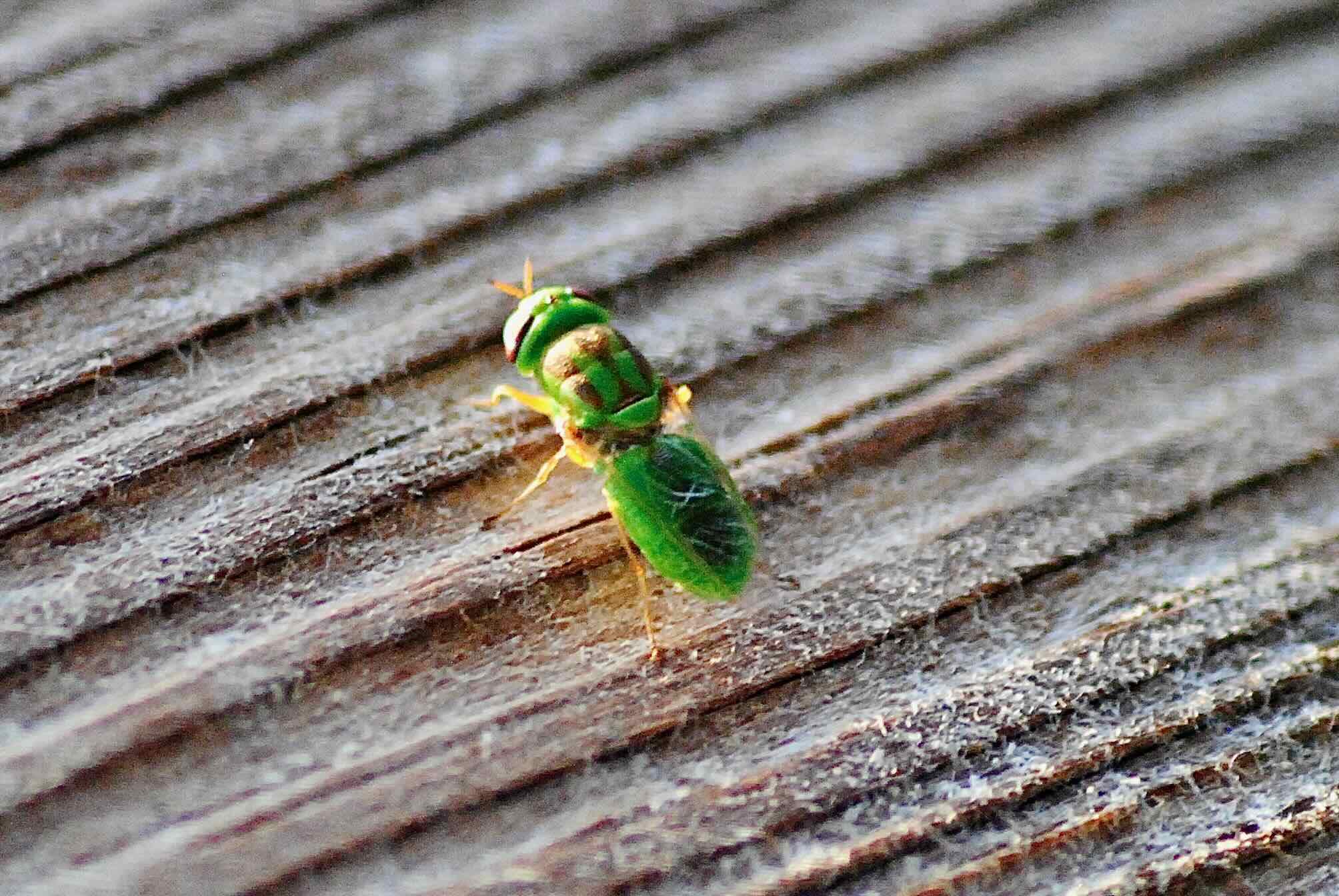
Green soldier fly, photographed at Green Cay Nature Center, Boynton Beach, Palm Beach County, in June 2014.
Not much soldierly about this guy, the green soldier fly, Hedriodiscus trivittatus. Not much soldierly about soldier flies period. At least not to our eyes, but apparently to some.
In fact we’d say this guy looks pretty gosh darn harmless, which he is. This not to say soldier flies aren’t important; they are but in a mostly benevolent way.
Green soldier flies are little guys, with a body that’s about a quarter-inch long, give or take a hair. They’re mostly green with large eyes in comparison with their size and intricate brown markings on the thorax that vaguely brings to mind a chalice between two heavy parentheses or brackets. (A little imagination is helpful. Think of it as a natural Roschach test.)
Note the short wasplike antennae on our guy (or girl — we don’t really know which). It’s been noted that soldier flies tend to buzz like a stinging insect might when in flight. Makes seem a little tougher to deal with than they really are, since they lack stingers and don’t bite. Sometimes in nature it helps to appear tough especially when you're not.
They’re mostly an insect of warmer climates — the southern United States, including Florida, Mexico, Guatemala, El Salvador and into Colombia. We’ve seen some references of sightings in more northerly regions of the U.S. and even into Canada.
Adult green soldier flies are pollinators and spend their time fluttering between blooms looking for a sweet meal. The kids — larvae — however, are a different story.
Oddly enough, they are much larger than the adults, going about an inch long. They have segmented bodies. They live in wet places, many aquatic, some in moss and under rocks, some under cow dung. They will eat some small animals but they really are part of nature’s clean-up crew, if you know what we mean.
One species of soldier fly, the black soldier fly, is so good “cleaning up” that it’s been used as an ecologically friendly way to rid farms of pig and poultry poop. They’re also more effective at composting waste than traditional methods that rely on bacteria and fungus.
According to the University of Wisconsin Milwaukee’s Bug Lady, soldier flies got their name because the stripes some members sport reminded some of gaudy military uniforms. We don’t get it, but hey, who are we? The Bug Lady, aka Kate Redmond, goes on to say the common names of some European soldier flies really reflect the military theme. As in silver colonel, the barred green colonel, and the ornate brigadier. I think we should salute them.
By the way, there are something like 2,700 species of soldier flies in the world, divided into 380 genera. Our guy, the green soldier fly is a member of Stratiomyidae, a family of soldier flies.
Green Cay Nature Center
